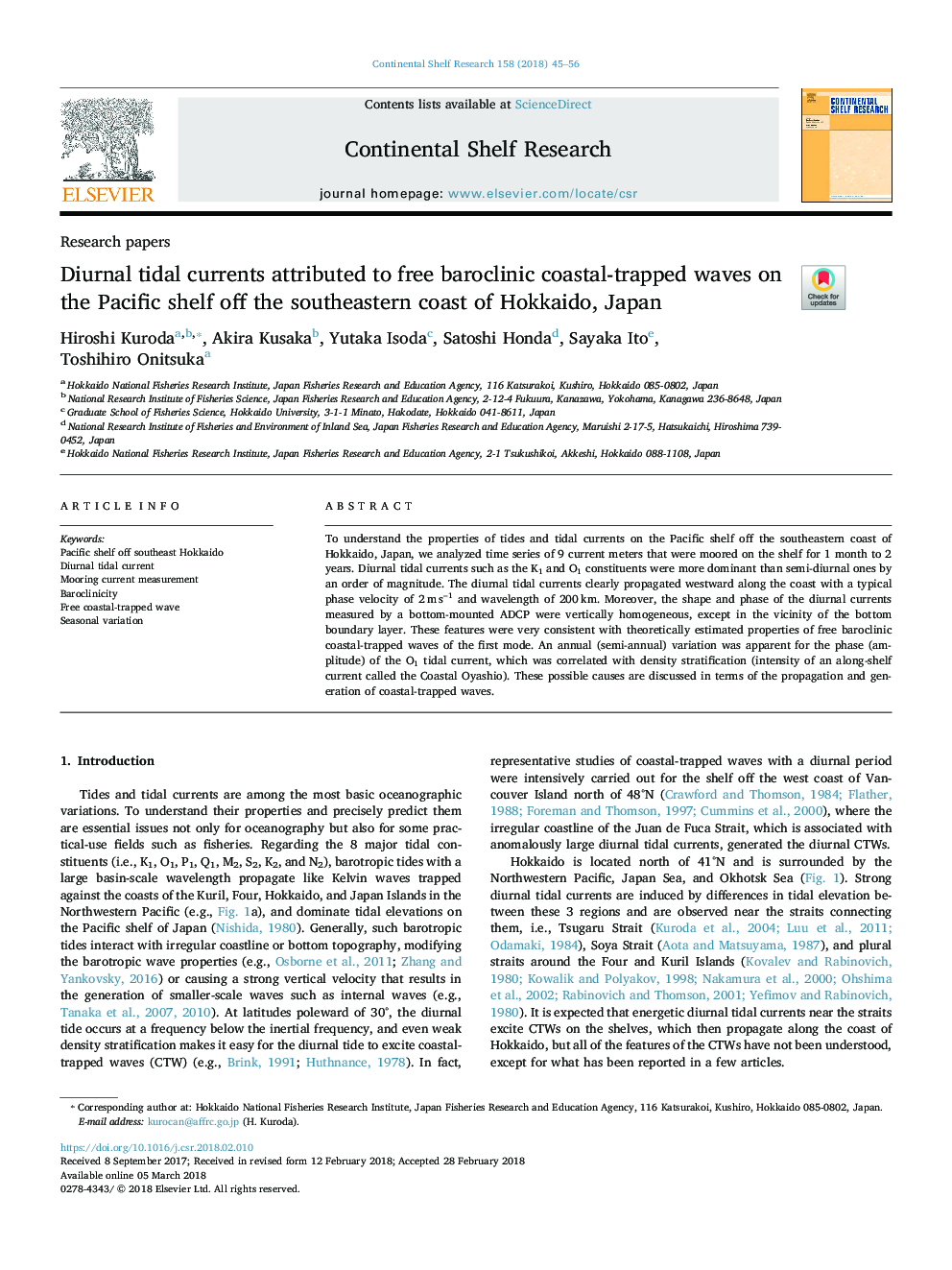| Article ID | Journal | Published Year | Pages | File Type |
|---|---|---|---|---|
| 8884063 | Continental Shelf Research | 2018 | 12 Pages |
Abstract
To understand the properties of tides and tidal currents on the Pacific shelf off the southeastern coast of Hokkaido, Japan, we analyzed time series of 9 current meters that were moored on the shelf for 1 month to 2 years. Diurnal tidal currents such as the K1 and O1 constituents were more dominant than semi-diurnal ones by an order of magnitude. The diurnal tidal currents clearly propagated westward along the coast with a typical phase velocity of 2â¯mâ¯s-1 and wavelength of 200â¯km. Moreover, the shape and phase of the diurnal currents measured by a bottom-mounted ADCP were vertically homogeneous, except in the vicinity of the bottom boundary layer. These features were very consistent with theoretically estimated properties of free baroclinic coastal-trapped waves of the first mode. An annual (semi-annual) variation was apparent for the phase (amplitude) of the O1 tidal current, which was correlated with density stratification (intensity of an along-shelf current called the Coastal Oyashio). These possible causes are discussed in terms of the propagation and generation of coastal-trapped waves.
Keywords
Related Topics
Physical Sciences and Engineering
Earth and Planetary Sciences
Geology
Authors
Hiroshi Kuroda, Akira Kusaka, Yutaka Isoda, Satoshi Honda, Sayaka Ito, Toshihiro Onitsuka,
